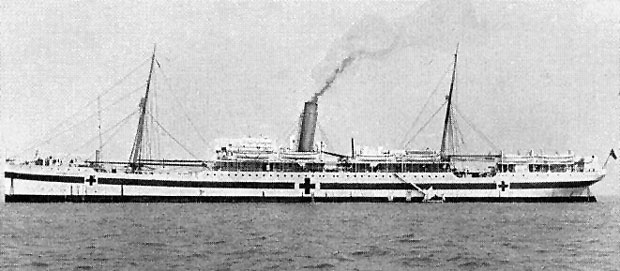A CHAPLAIN who was born in Helensburgh is thought to have drowned when the hospital ship Glenart Castle was torpedoed in the Bristol Channel on February 26 1918.
Captain the Rev John B.McIlvaine, who was 39, was the Roman Catholic chaplain on the ship, and his Church of England colleague also died.
Father McIlvaine, son of William and Eleanor McIlvaine, was educated locally, and after training as a priest acted for several years as senior assistant at Glasgow’s St Andrew’s Cathedral until 1916.
Well known to parishioners of St Joseph’s in Helensburgh, he was among the first of the Glasgow Catholic priests to join the Army, serving as a chaplain 4th Class. He was attached to the 2nd/7th Battalion The Sherwood Foresters (Notts and Derby Regiment).
He served for some time with the forces in France, and not long before his death had returned to Glasgow to recover from the effects of a German gas attack.
His Majesty’s Hospital Ship Glenart Castle was a steamship built in Belfast as Galician in 1900 for the Union-Castle Line. She was renamed in 1914, and was requisitioned for use as a British hospital ship during the war.
The ship left Newport, South Wales, heading towards Brest, France, on the day she was sunk.
Fishermen in the Bristol Channel saw her clearly lit up as a hospital ship. But at 4am she was hit by a torpedo in the no.3 hold, fired by the German U-Boat UC-56.
The blast destroyed most of the lifeboats, while the pitch of the vessel hindered attempts to launch the remaining boats. In the eight minutes the ship took to sink, only seven lifeboats were launched.
Rough seas and inexperienced rowers swamped most of the boats.
Only 32 survivors were reported, while 162 people were killed, including the Captain, Bernard Burt, eight nurses of the Queen Alexandra’s Imperial Military Nursing Service, seven Royal Army Medical Corps medical officers and 47 medical orderlies.
Of the hospital patients being treated on board, 99 died, as did the matron, Miss Kate Beaufoy.
Evidence was found suggesting that the submarine may have shot at initial survivors in an effort to cover up the sinking.
The body of a junior officer was recovered from the water close to the position of the sinking. It was marked with two gunshot wounds, one in the neck and the other in the thigh.
The body also had a life vest, indicating he was shot while in the water.
After the war, the Admiralty sought the captains of U-boats who sank hospital ships, in order to charge them with war crimes.
Kapitänleutnant Wilhelm Kiesewetter, the submarine commander, was arrested after the war on his voyage back to Germany and interned in the Tower of London.
He was released on the grounds that Britain had no right to hold a detainee during the Armistice.
After Father McIlvaine’s death was confirmed, a Requiem Mass for him was observed in St Andrew’s Cathedral.
His name is on the Helensburgh War Memorial in Hermitage Park, and the Hollybrook Memorial in Southampton.





